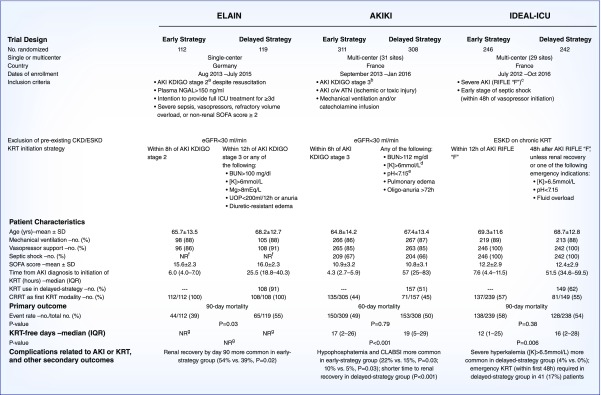Figure 1.
Timing of KRT in AKI: placing the IDEAL-ICU trial in context. aDefined as a two-fold increase in SCr or UOP<0.5 ml/kg per hour for ≥12 hours. bDefined as a three-fold increase in SCr, an increase in SCr to ≥4 mg/dl, UOP<0.3 ml/kg per hour for ≥24 hours, or anuria for ≥12 hours. cDefined as a three-fold increase in SCr, an acute increase in SCr ≥0.5 to a value ≥4 mg/dl, UOP<0.3 ml/kg per hour for ≥24 hours, or anuria for ≥12 hours. dOr [K]>5.5 mmol/L despite medical treatment. eIn the context of either pure metabolic acidosis or mixed acidosis. fThe prevalence of septic shock on enrollment was not reported in ELAIN, but only approximately 32% of patients had severe sepsis. gNot reported, but the median duration of KRT was significantly lower in the early-strategy group (9 days [IQR, 4–44 days]) compared with the delayed-strategy group (25 days [IQR, 7 to ≥90 days]; P=0.04). ATN, acute tubular necrosis; CLABSI, central line-associated bloodstream infection; CRRT, continuous RRT; c/w, consistent with; IQR, interquartile range; K, potassium concentration; Mg, magnesium; NGAL, neutrophil gelatinase-associated lipocalin; NR, not reported; SCr, serum creatinine; SOFA, Sequential Organ Failure Assessment; UOP, urine output.

